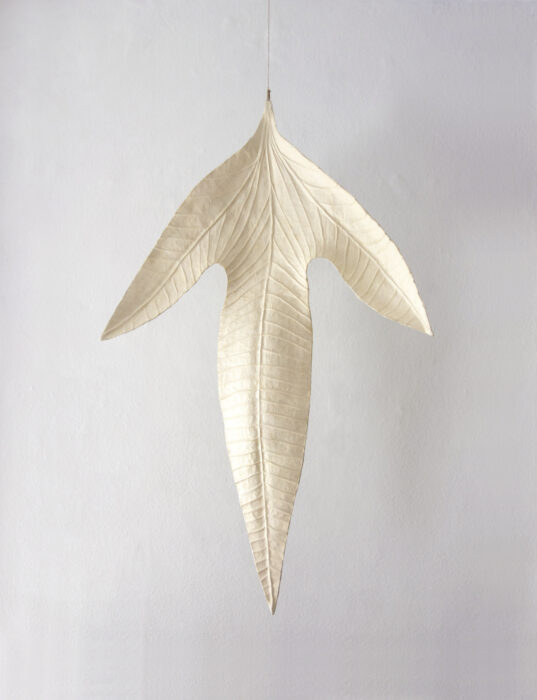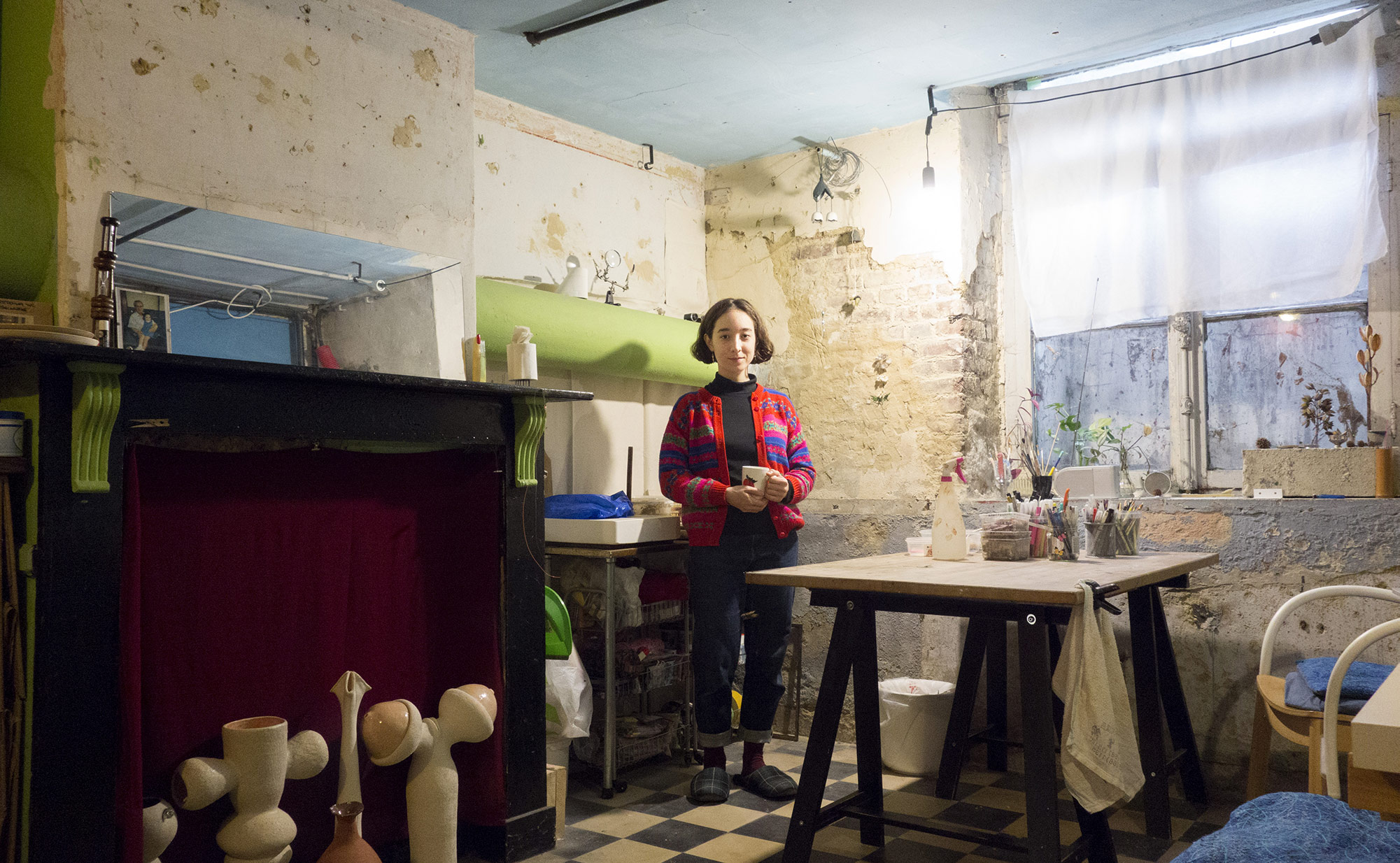

Seed Angel
2024, rice paper and jute cord, 120x80x10cm
Haagbeuken worden vaak als straatbomen beplant en met hun bladeren voorzien ze voedsel aan insecten – larven van meikevers, vlinders en motten – in de stad. In de herfst zorgen de zaden lekkernij voor vogels. Elke zaad heeft een schutblad die in trossen hangen. Deze schutblad dient als windvanger bij het verspreiden van de zaden. Na deze taak stapelen de schutbladeren op straat, als minuscule gevallen engeltjes. Zaad Engel is een uitvergroting van zo’n schutblad en staat stil bij de plantaardige wijsheid van de windzaaiers.
Dit werk is gecreëerd ter gelegenheid van de tentoonstelling ‘Any Way The Wind Blows’ te C-mine, Genk
街路樹としてよく植えられるシデの葉は、コガネムシ、蝶や蛾の幼虫など、都市に暮らす昆虫の餌となります。秋には、種子が鳥に栄養豊富なごちそうを提供します。種子にはおもしろい形をした苞葉が付いていて、重なり合って木から房状に垂れ下がります。苞葉は風をとらえて、種を遠くへ飛ばす役割を果たします。この役割を終えると、苞葉は小さな堕天使のように街路に積み重なります。Seed Angel はその苞葉を拡大したもので、風で種を飛ばす植物の知恵へ想いを馳せています。
この作品は、ヘンク市のC-mine博物館におけるAny Way the wind blows展に合わせて制作されました。
Hornbeams are often planted as street trees and with their leaves they provide food for insects in the city: larvae of cockchafers, butterflies and moths. In autumn, the seeds are nutricious treats for birds. Each seed has a bract that hangs in clusters. This bract serves as a wind catcher in spreading the seeds. After this task, the bracts pile up on the street like tiny fallen angels. Seed Angel is an enlarged version of such a bract and dwells on the vegetable wisdom of wind sowers.
This work was created on the occasion of the exhibition ‘Any Way The Wind Blows’ at C-mine, Genk.




